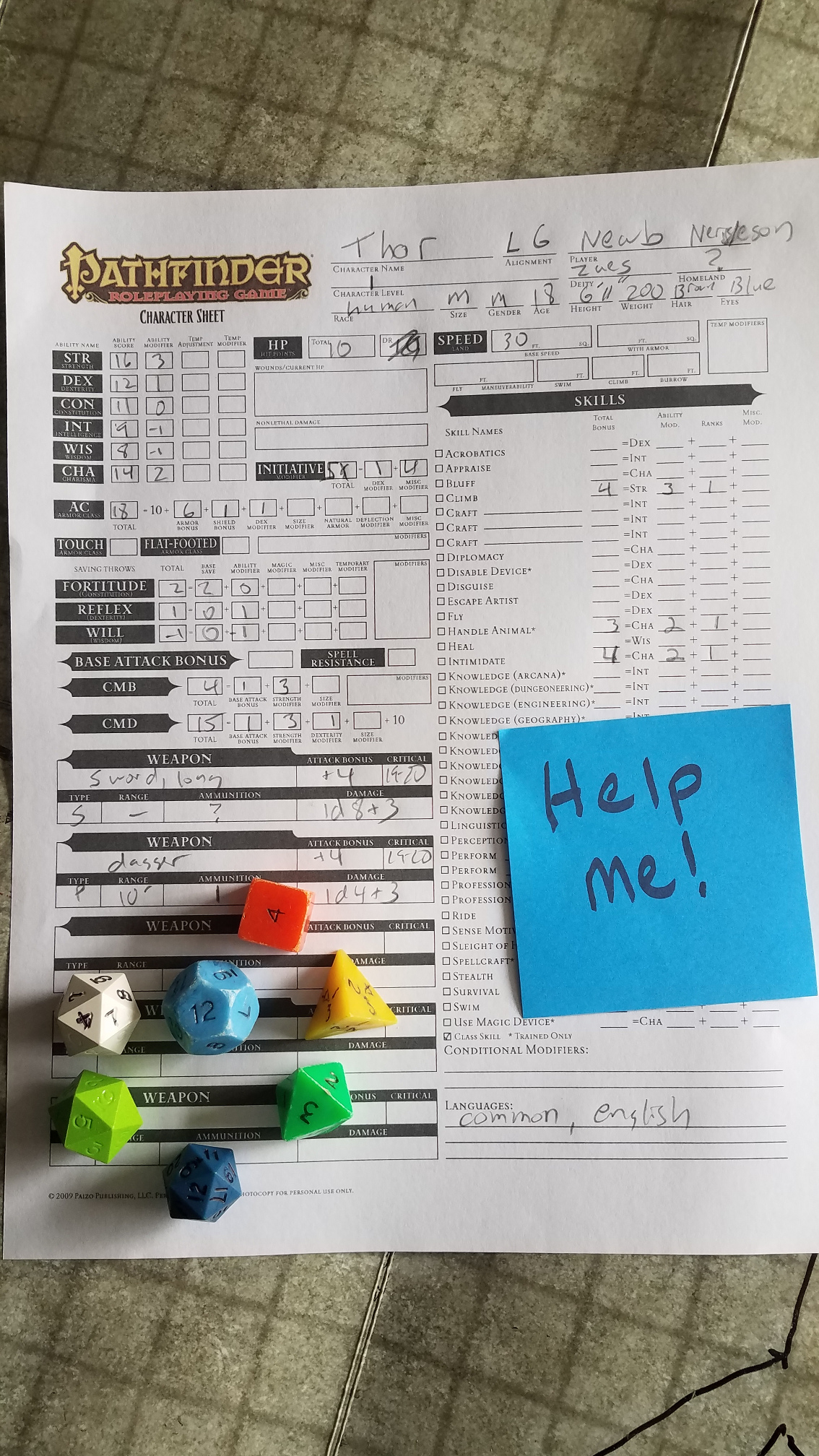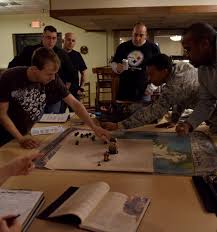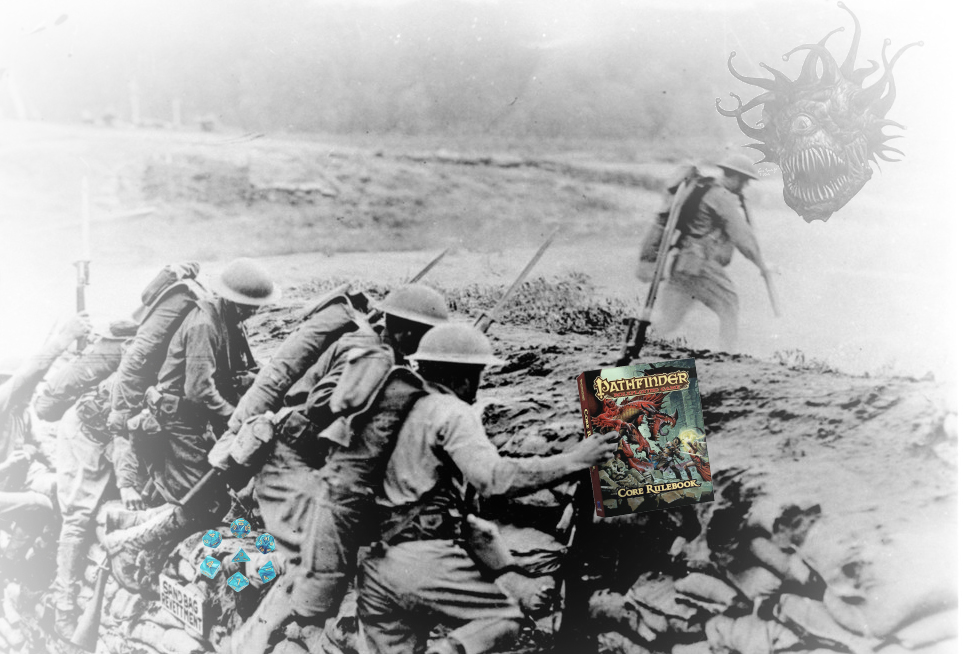Instructional coach and 3 star Pathfinder Society GM Mark Orr shares his thoughts and techniques to get more players into the game.
Teaching people to play Pathfinder can be an epic adventure with a high challenge rating. I’ve been a Game Master for decades, and worked in public education for most of that time. From my years as a teacher, I’ve learned how to help people learn new content, and I’m going to describe how some of these techniques can help people to learn complex games like Pathfinder.
Learning happens when the learner makes connections between current knowledge and new information. Good teachers begin instruction by determining what students already know. When you are teaching someone Pathfinder, you should begin by asking them about similar previous experiences. This could include other RPGs, collectable card games, and board games. You can also tap into more common experiences, like movies, books, video games, and fairy tales. Once you know what your new players know, you can describe the rules by saying, “It’s like _____ in _____.”
Another roadblock for new players is the complexity of a role-playing game. When teachers have students who need to quickly learn a large amount of content, one technique they may use is scaffolding. Like the scaffold around a new building, instructional scaffolding provides students with support as they are learning a new skill. This support remains only as long as is necessary. When teaching Pathfinder, it’s important to get new players rolling dice and playing the game as soon as possible. Fortunately, Pathfinder provides scaffolds specifically for teaching new players. Pre-generated characters allow players to start playing without having to first learn all of the rules. The Pathfinder Beginner box is a great way to give players a fun experience that omits some of the more complex and often confusing rules such as attacks of opportunity. When players are ready to take the next logical step by creating their own characters, the Strategy Guide scaffolds the sometimes overwhelming Core Rulebook by helping new players make solid mechanical choices that help them to build the character they want to play.
In order for learning to happen, the learner must have a safe and supportive environment. The volume of rules in Pathfinder can cause anxiety, and new players often feel pressure to both role-play their characters well and make sound tactical decisions, and they may not have experience doing either of these things. This is often multiplied for women and people of color at a table that is often mostly white males. While it’s great to say that you are welcoming to all kinds of people, and it’s essential to have zero tolerance for sexist or racist behavior at the table, you must also show through your actions that you value diverse approaches to problem solving in the game.
One common mistake I’ve observed at gaming tables is a new player declaring an action either in or out of combat, and a more experienced player saying “You don’t want to do that,” followed by a detailed explanation of rules, or worse, suggesting “you should do this instead”, and implying “that’s what I would do”. While the experienced player means well, no one signs up to play the game because they like being told what to do. Instead of telling a new player what their character can’t do, you could point out other options by saying, “You could also do this.” If they really want to throw a banana peel in front of the zombie, don’t try to stop them! Sometimes an unusual idea works, and can be the stuff of legend. If a player wants to do something that absolutely won’t work because of game mechanics, such as casting charm person on the zombie, you should let them know, but be ready to suggest a few other effective options they can choose from, rather than dictating to them what they “should” do. New players need honest but positive feedback on how they are doing with learning the game, but as a GM or fellow player, you need to be selective and try not to correct everything they do. New players will not build fully optimized characters their first time around the table, nor will they always choose the best tactic for the situation. Allow that to be okay, and remember how bad your first character was, and how much you fondly remember those first adventures. When you see other people doing this, politely say, “Let them do what they want”. This will make your new players feel more confident in taking risks without fear of having their ideas squashed.
This last bit of instructional coaching is for the Game Masters. If you want to introduce new players to gaming and keep them coming back for more, give them a chance to shine. In the education world, we often say that nothing is more motivating than success. Your new players may not always know what to do, and may end up leaning on the more experienced ones. You don’t want the player to feel like a spectator in a game that should be interactive. Look at the player’s skills and abilities, and create a situation where those abilities can make a difference. Rather than trying to convince the player it’s not worth putting ranks in Profession (cook), create an encounter where only someone with that skill can hide the poison in the ogre’s stew. When players experience success but know there was a real chance of failure, the game is exciting, and they want to come back and play again.
For our hobby to continue for decades to come, we have to continue to recruit new players. We can be more successful in doing so by making those first games positive experiences. I love this game, and I hope to pass on that love to as many people as I can, and if you are reading this, I think you do, too.
About the Author
Mark Orr is an instructional coach in the public school system and a Pathfinder Society 3 star GM. He’s been playing role-playing games since the age of 11, when like so many of us, he learned it from his older cousin, who is also now a teacher. He is also the guitarist for a geeky band, Mystery Soda, and finance manager for his wife Joie’s whimsical crafting business, Ginger Surprises. You can check out our music at www.mysterysoda.com, and fun things to wear at www.gingersurprises.com.







